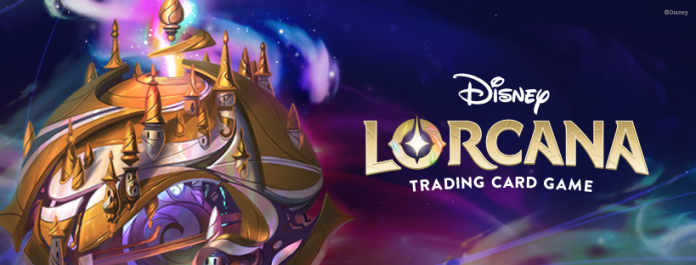It seems like you can’t walk into a Target these days without finding Lorcana in stock. Over the holidays, I saw quite literally hundreds of boosters on shelf pegs. We’ve got more than our fill of the supposed “endorphin rush” of cracking packs and I didn’t feel like paying $6 to get a fourth pack that has If It’s Not Baroque and White Rabbit’s Pocket Watch in the rare slots (true story). It appears that the Bad Times have ended, and everyone should be able to get a hold of some packs. This is great news, and it bodes well for the health of the game as we approach the release of the third set, Into the Inklands.
But what if you got some packs for Christmas and you are still learning the ropes – how do you know which cards are treasures and which are trash? Here’s my take on what the ten best cards are from The First Chapter.
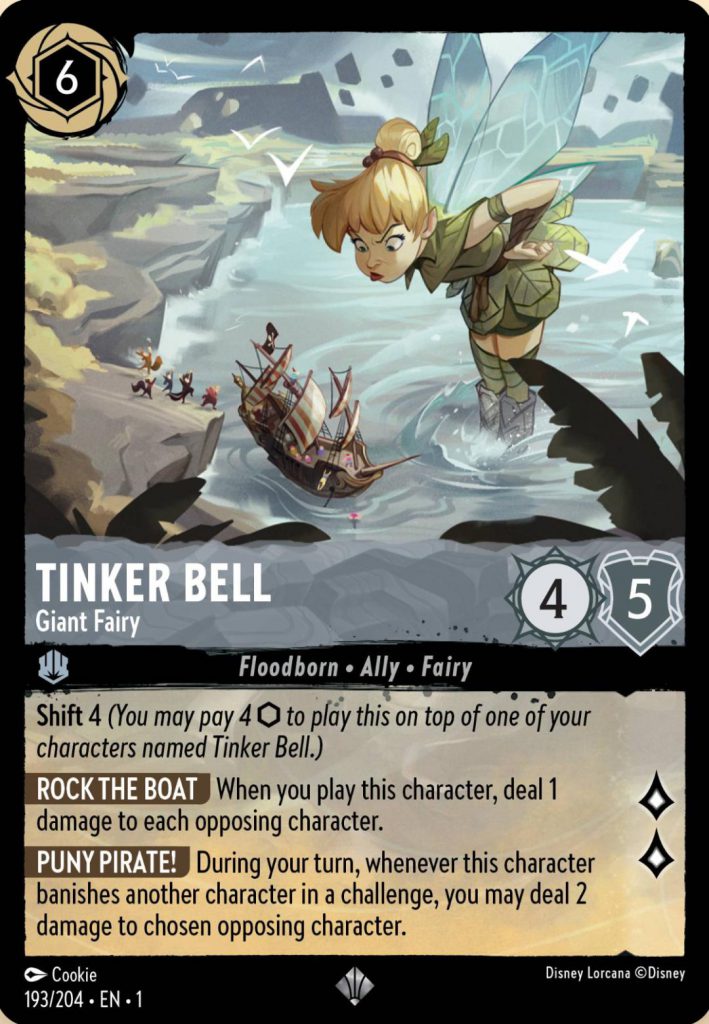
Tinkerbell, Giant Fairy – This Steel staple is one of the most versatile, effective cards in the entire game to date. She is Floodborn, so she shifts onto the 3 or 4 ink Tinkerbell varieties as early as turn 4 and she immediately hits everything the opponent has out for one damage. This can hit warded characters (such as Pascal), it can wipe out players that are doing the Lilo/Maleficient/Pinocchio rush, and it can put a ping on anything so you can Ring the Bell. If that’s not enough, when she banishes a character in a challenge she does 2 damage to another opposing character. The spread damage she represents is huge enough, but with a big body and questing for 2 this is the best character in the first set. And with Rise of the Floodborn she got even better with cards that give effects when Floodborn are played like Chief Bogo and Bucky.

Captain Hook, Forceful Duelist – The quintessentially great 1-drop character, played in almost every Steel deck. With a 1/1/2 statline, he doesn’t look like much but when challenging he gets +2 to his strength- meaning that he can exert early game board control well into midgame when 3 willpower characters are common. I’ve played many games where I felt that Hook has held the line for me while the game develops, allowing me to develop mid to late game strategies. The only issue is that his Floodborn isn’t that great, but regardless this is now-classic common on its own merit. Prince Eric, Dashing and Brave is kind of the 2 ink version and is also a great card.
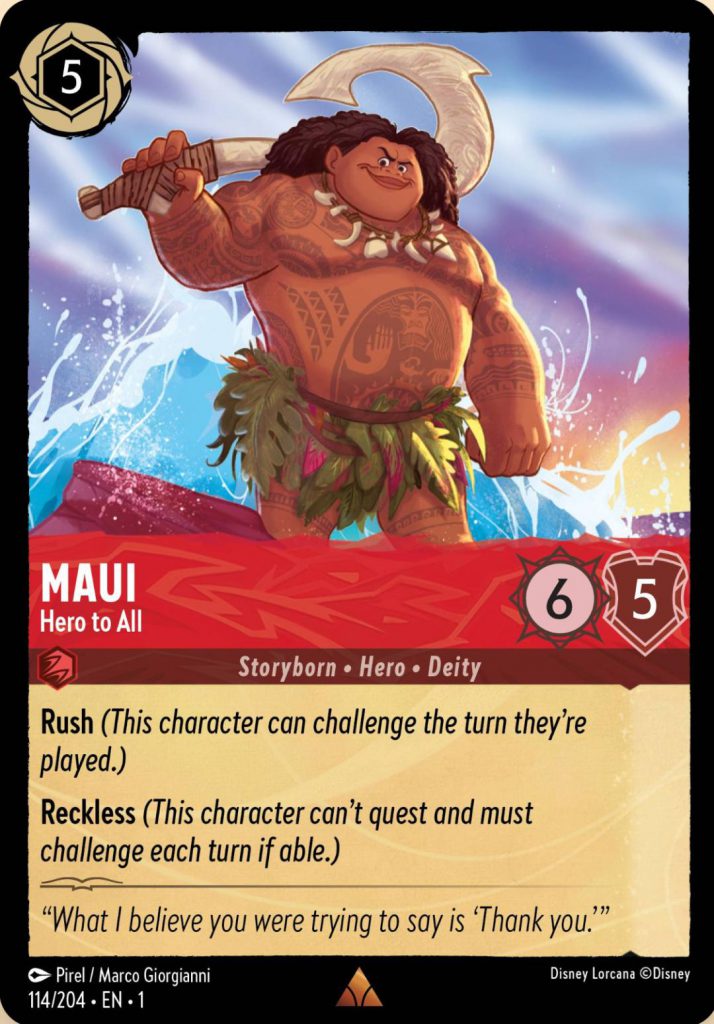
Maui, Hero to All – Until recently, I think I would have had Dragon Fire in this position. But that 5-ink/uninkable action has become somewhat outclassed by this ridiculously effective Maui. He has no lore for questing, but he hits the table with Rush and Reckless and a beefy 6/5 so he is effectively a bomb. It’s true that he’s not direct removal like Dragon Fire, but with healing or bounce effects he can remain a threat in your hand or on the table. I’m seeing this card in almost every Ruby deck these days.
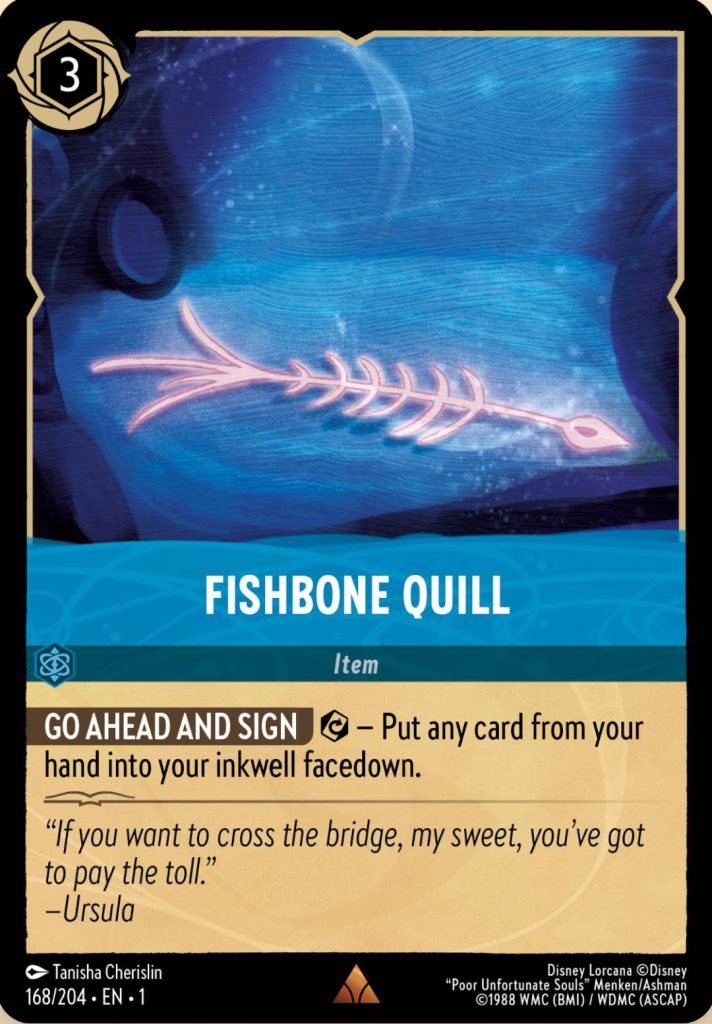
Fishbone Quill – Sapphire, along with Emerald, suffered in the First Chapter from not quite having all the cards needed to leverage their best qualities. Sapphire is big on ramping, and although I never got that strategy to work consistently in the first set Fishbone Quill was a mainstay. This item lets you ink any card from your hand, including uninkables, and just one will double your ink-come. With two on the table, you are tripling it. The downside is that you’ve got to have extra card draw (Beast’s Mirror, A Whole New World, Friends on the Other Side, etc.) to keep cards in hand. But this can be one of the best support cards in the game and help to get finishers to the table ahead of schedule.
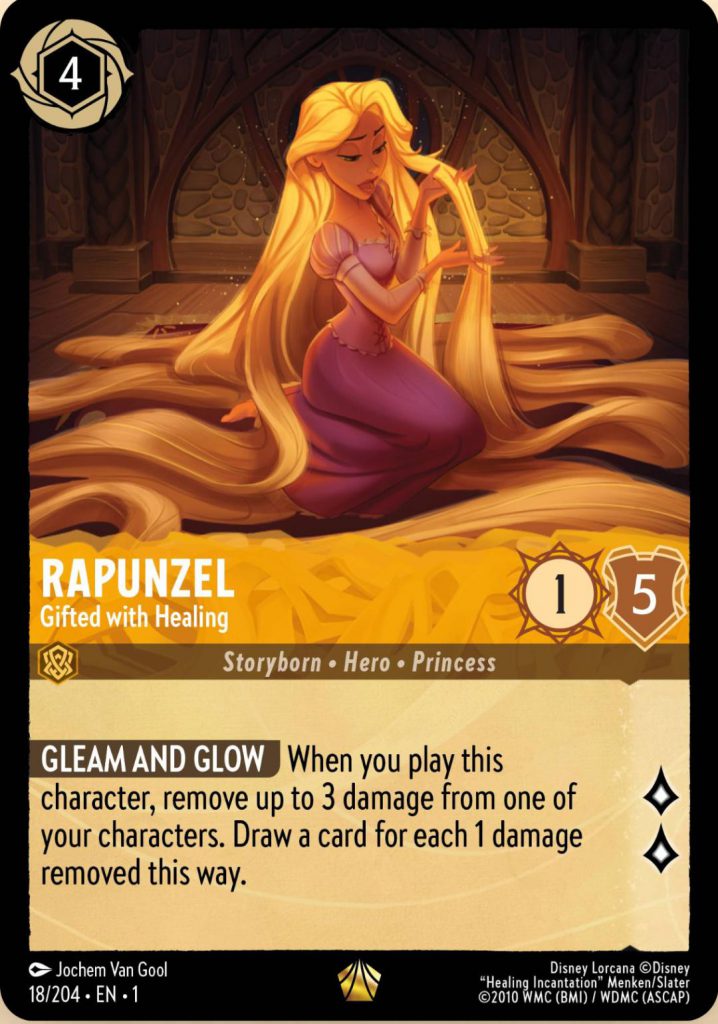
Rapunzel, Gifted with Healing – It’s funny, at first this sort of unassuming card didn’t really make an impression on me and I kept getting it confused with the much less valuable and much less powerful Rapunzel, Letting Down Her Hair. But this card has more than proven its worth as a powerful card draw engine for Amber. Gleam and Glow allows Rapunzel to heal a character for up to three damage when played, and you get a card for each damage healed. Then she stays on the board with a hearty 5 willpower and 2 lore. I think that in time this card may be outclassed by other healing and drawing options, but those other options are currently in other colors. Regardless, this card has left a mark on the game’s meta.
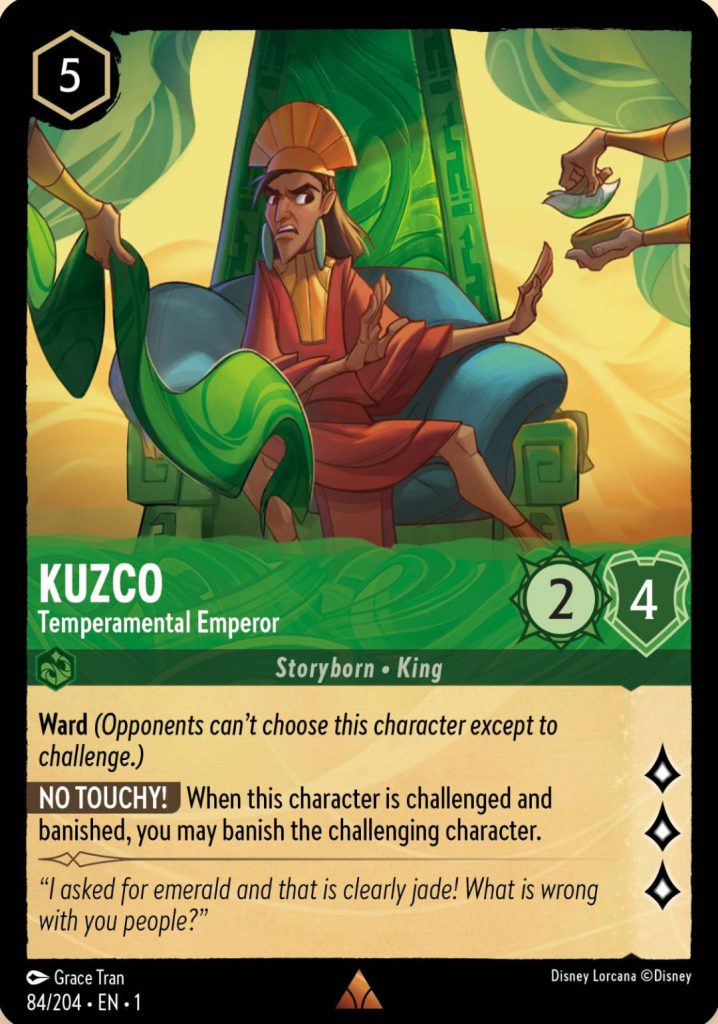
Kuzco, Temperamental Emperor – Never before has David Spade been so desirable or potent. Seated in the very competitive 5-ink slot for Emerald (which has become even more competitive with the new set), Kuzco is the perfect midgame quester with 3 lore and most importantly, Ward. This means that he can’t be chosen for Dragon Fire, Elsa’s Deep Freeze ability, Smash, or other cards or effects. Should someone dare to challenge him, he has No Touchy which triggers when he is banished, also banishing the opposing character. And from experience, I can tell you that players will throw everything they have on the board at him to avoid seeing that smug mug walking across the 20 lore threshold.
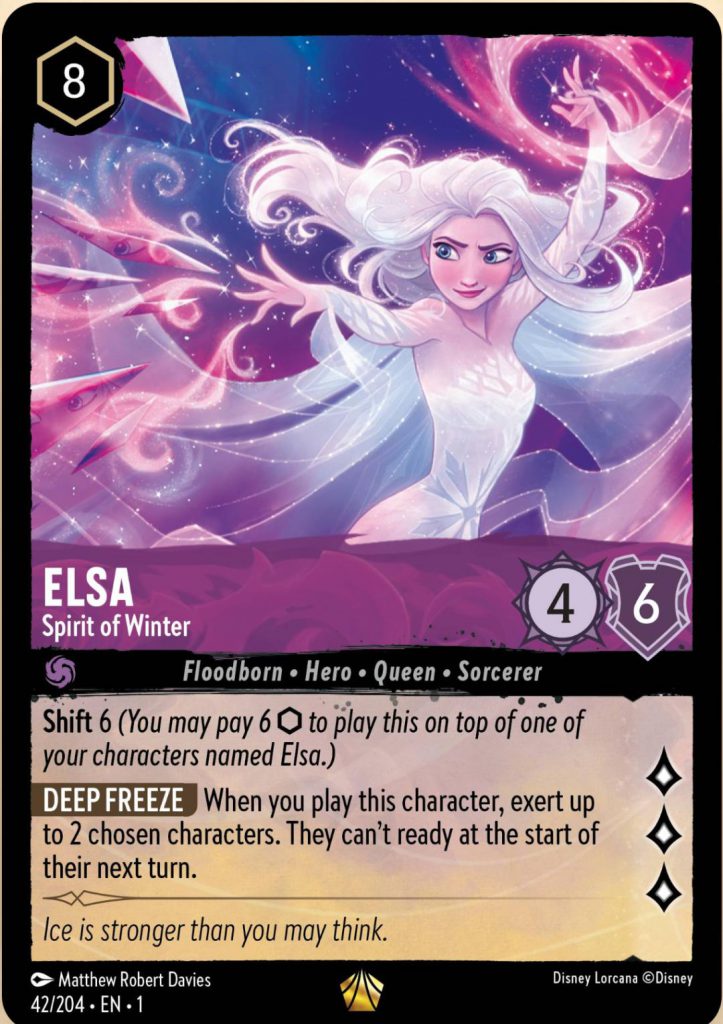
Elsa, Spirit of Winter – The iconic card of the set, this beautifully illustrated card is also absolutely devastating. I’ve not seen too many games lost by the player who gets this 8 ink, uninkable character out in the mid- to late- game. Her ability, Deep Freeze stun-locks two chosen characters and prevents them from readying on their next turn. With 3 lore for question, If you shift her onto an existing Elsa (for 6 ink) this could mean that she is able to quest on her own for 6 ink before she’s threatened. The card is dramatic, exciting, and although some argue that it is a “win more” piece, I think it has huge potential in any Amethyst deck to deliver a surprising turnaround.
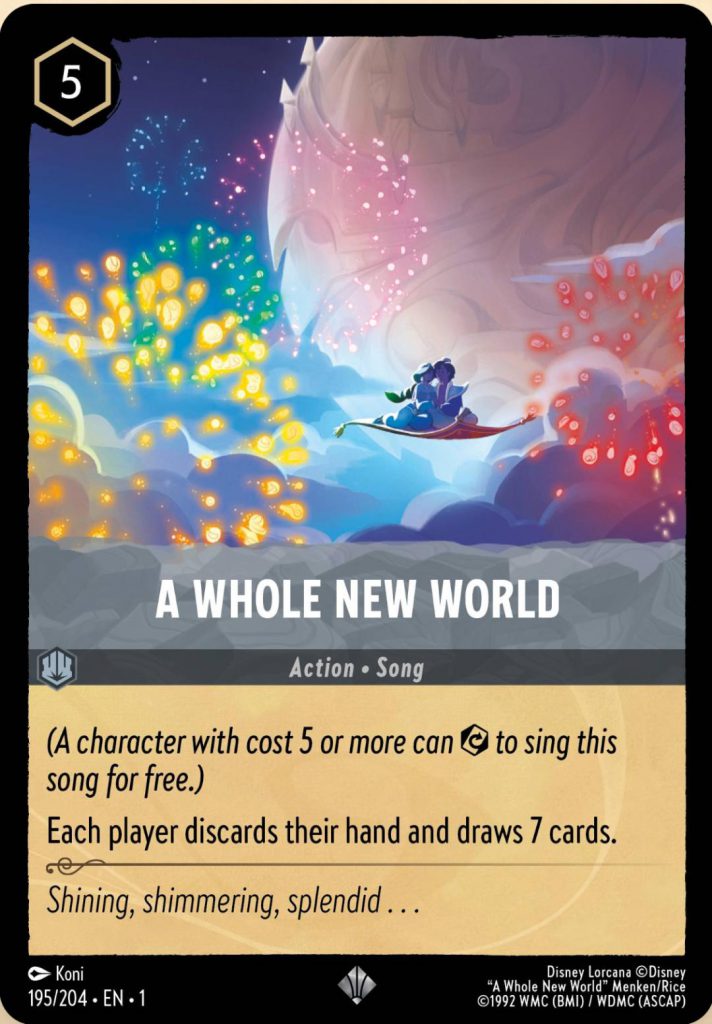
A Whole New World – Undoubtedly the most controversial card of the set, it’s MTG’s Wheel of Fortune for Lorcana. Both players discard their hands and draw seven new cards. It’s a reset button to an extent, and when played with good timing it can deal a shocking blow to an opponent with a full hand while you are hellbent or with just a few cards in hand. The card is actually self-balancing because half the time you drop it, you wind up putting your opponent into a better situation. But it can also completely reverse the trajectory of the game and put you in at an advantage if you’ll take a chance on it. Don’t you dare close your eyes!

Pascal, Rapunzel’s Companion – This Amethyst 1-drop seems slight with a shrimpy statline but Evasive (Lorcana’s version of Flying) was huge in The First Chapter. I’ve seen many games where a turn 1 Pascal survived the whole game and gave value by questing throughout without being threatened by other Evasives or direct removal. With an Eye of Fates or two, Pascal becomes a questing monster. With Support he can suddenly pose a threat to most midgame characters. And now, with the bounce mechanics in Rise of the Floodborn, he’s a great target for Madam Mim or Arthur.
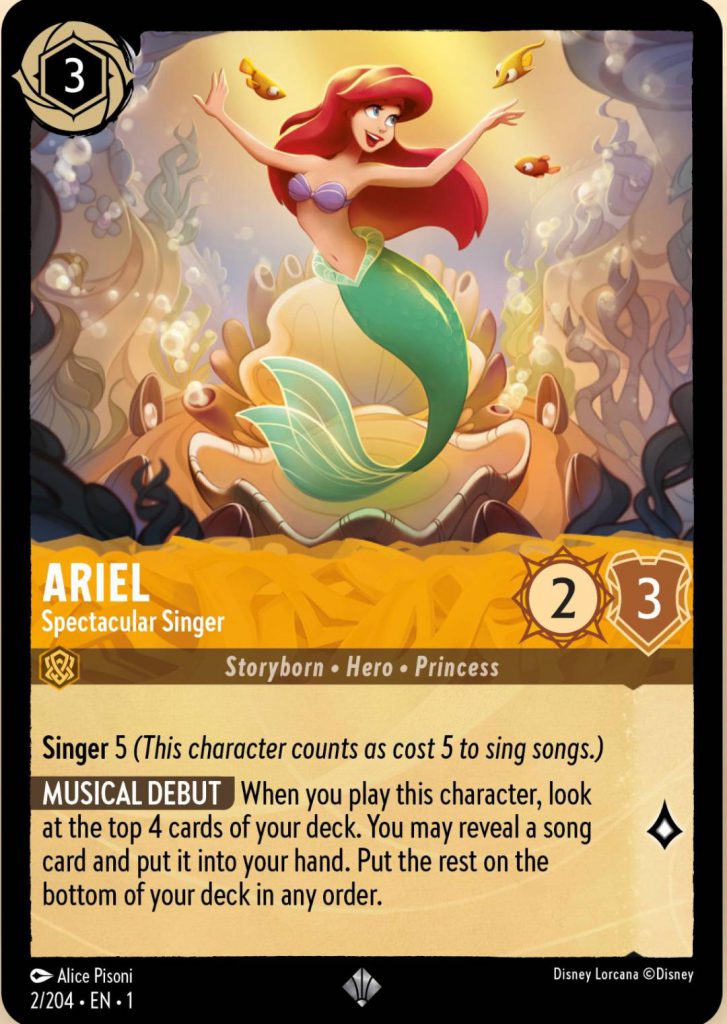
Ariel, Spectacular Singer – “Steelsong”, an Amber Steel deck, dominated the meta for much of The First Chapter and this version of my daughter’s favorite Disney character was a key card in those builds. She drops at 3 but can sing like a 5-ink character, opening powerful songs like A Whole new World and Grab Your Sword early. What’s more, she also has Musical Debut, which is a Scry effect that lets you look at the top 4 cards of your deck and take a song. We still don’t have a Floodborn Ariel yet but hopefully Into the Inklands will bring one, and that will only make this card even better.
Next time: The arguing will continue with the ten best Rise of the Floodborn cards.
Have any questions or feedback? Drop us a note in the comments below or email us at contact@goonhammer.com. And if you want regular updates in your inbox, subscribe to our newsletter.
